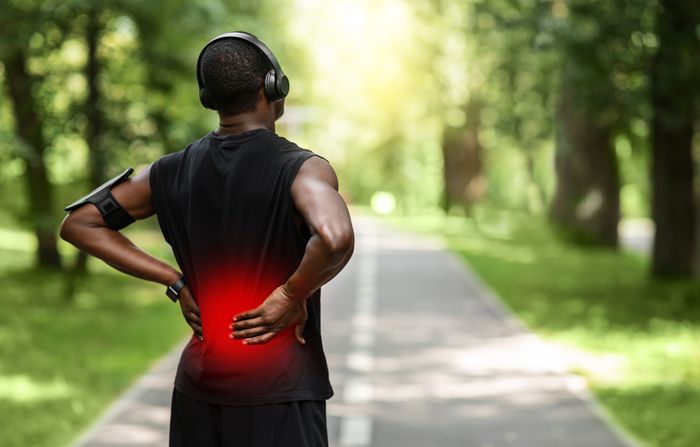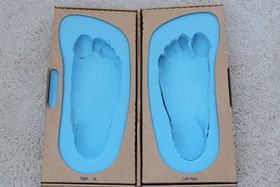Orthotics for Helping With Back Pain
Updated February 17, 2023.

Back pain can be incredibly problematic due to the level of work the spine does daily. Any back issue, no matter how little, must be addressed promptly because it tends to get complicated if not treated quickly. While back pain can be caused by several factors, sometimes it occurs because of foot problems.
When pain in the back is due to a foot condition, the only way to relieve the back pain is to address the foot problem directly. This article looks at the various causes of lower back pain and the effectiveness of using foot orthotics to treat it.
Causes of Lower Back Pain
The statement “if one is affected, all will be affected” is true of most interrelated things, including the kinetic chain. This chain comprises the back, hip, knee, and ankle joints. Because they are interrelated, when one is affected, all will be affected. This is why a foot problem can also result in lower back pain.
For example, if your feet naturally overpronate, your weight will rest on the outer edge of your foot when walking. This uneven weight distribution will force the knee out of alignment and destabilize the pelvis. It will also affect the hip and put a strain on the lower back, causing pain.
With foot problems, other joints are forced to adopt compensatory patterns and postural changes that place them under significant strain and cause lower back pain. And by dealing with the cause directly using foot orthotics, you can easily solve the problem of back pain.
How Foot Orthotics Can Help Back Pain
Foot orthotics can help control abnormal motion of the feet. They also help to improve and stabilize the position of the feet, which, in turn, improves the gait and posture of the individual. Likewise, they can be used to realign the hindfoot to reduce and prevent incorrect foot pronation.
In choosing foot orthotics, it is better to go for custom orthotics instead of over-the-counter insoles. While over-the-counter orthotics are cheap and may be effective for mild conditions, they can lead to more foot problems because they are not custom-designed to the foot or made from quality materials.
This is exactly what Upstep orthotics are for. They are custom-fitted to support and balance the feet and reduce abnormal motion. Consequently, they stabilize the pelvis and enhance the normal function of the spine, effectively dealing with any foot problem that may be causing back pain.
Best Orthotics for Back Pain
Orthotics are made from a wide range of materials, including polypropylene, polyethylene, acrylic, fiberglass, carbon fiber composites, ethylene-vinyl, etc. The exact material your orthotic will be made from will depend on the different types of orthotics and their intended use.
Our orthotics are made from the best materials and the most advanced technology by specialists who perform their due diligence to design a custom-fitted orthotic using your unique foot impressions and questions on your medical history. Visit our shop or contact us to find out more about how we can help you.
Correct Usage of Orthotics
Until your body has adjusted completely to the orthotics, you should avoid wearing them for long or while doing strenuous activities. Usually, it will take two to four weeks for this to happen. You can start off wearing them for one hour at a time and then progressively increase the duration as it becomes more comfortable. Otherwise, you can simply follow the advice of your podiatrist on how to use your orthotics.
When to Consider Orthotics for Lower-Back Pain
It is evidence-backed that prescribed orthotics can significantly improve back pain and dysfunction in six weeks. So, instead of just walking into a random store and picking up a generic insole, it is recommended that you go for custom-made orthotics. Be it the rigid and functional orthotics or the soft and accommodative orthotics, they are designed to cushion your feet, provide support, and relieve your pain.
With just a call, you can link up with our team of podiatrists who will take a detailed assessment of your feet, considering everything from their shape to your age, lifestyle, everyday activities, previous experience with orthotics, and even your favorite shoes.








